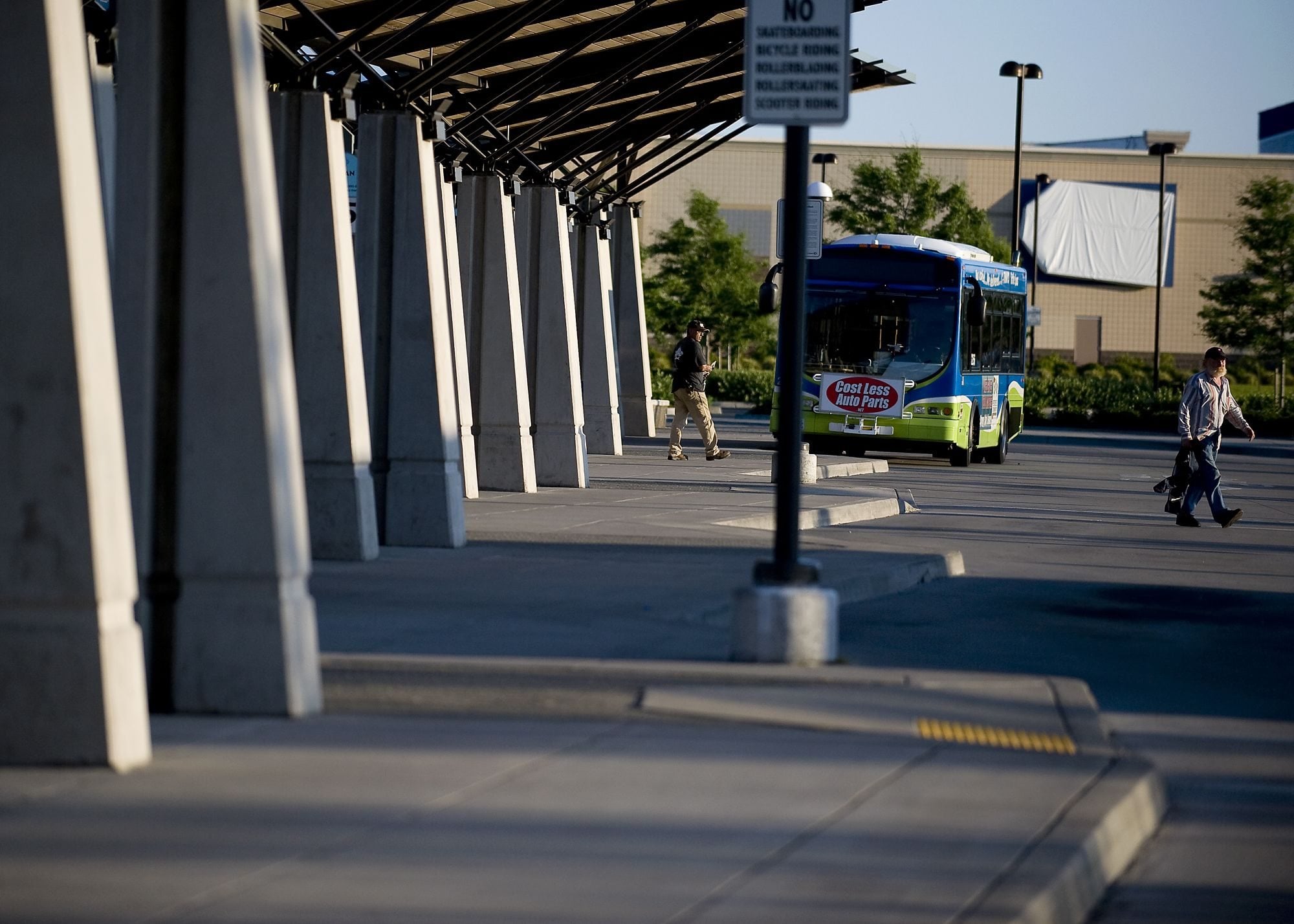Voters may know the story by now: Citing dwindling reserves, a beleaguered C-Tran comes to voters asking for a 0.2-percentage-point sales tax increase to make ends meet and keep bus service intact.
Sound familiar?
That was 2005. Voters passed that measure convincingly, after rejecting a larger tax hike the year before.
Six years later, C-Tran is again asking voters to raise the local sales tax by 0.2 percentage points, again to pay for basic bus service. Again, C-Tran officials have said the agency will need major service cuts to balance its budget should the measure fail.
But this time around, Proposition 1 comes amid a much more shaky economy. As the agency’s finances fall under a microscope ahead of this year’s Nov. 8 vote, some tax-weary voters are questioning C-Tran’s efficiency and looking hard at its message to the public — then and now.
C-Tran officials have recently said the 2005 vote, which boosted C-Tran’s local sales tax from 0.3 percent to its current 0.5 percent rate, was only meant to carry the agency for five or six years before more funding would be needed.
“We knew that it was essentially a Band-Aid,” said C-Tran Public Affairs Director Scott Patterson.
That message was spelled out in a June 2005 memo to the C-Tran board, which assumed the measure as a “six-year plan from 2006 to 2011,” But the timeline didn’t make it into a fact sheet that went out to voters that summer.
That led Camas resident Margaret Tweet to cry foul at last week’s C-Tran board meeting, saying many voters likely didn’t realize then that they’d be considering another tax increase just six years later. Patterson called the omission a regrettable oversight as C-Tran rushed to get the measure on the ballot in time to preserve its funding.
“Normally we’d have weeks to prepare. We had days to prepare,” Patterson said. “We were scrambling, to be perfectly candid.”
Proposition 1 would raise C-Tran’s sales tax rate from 0.5 percent to 0.7 percent — an additional 2 cents on every $10 purchase for consumers — generating an extra $8 million to $9 million annually in revenue for C-Tran. That would be enough to carry the agency and keep service intact for another 10 years, he said.
If it doesn’t pass, C-Tran officials say they’ll have to make major cuts to basic bus and C-Van paratransit service. That includes 12 weekday routes on the chopping block, plus all Sunday and special event service. In all, C-Tran has said service cuts will amount to about 35 percent if Proposition 1 goes down.
Focus on reserves
In both the 2005 and 2011 campaigns, C-Tran’s reserve funds have figured strongly into the conversation. Patterson acknowledged that big reserves were one reason voters rejected the agency’s 2004 ballot measure.
Proposition 1 opponents have pointed to C-Tran’s most recent Comprehensive Annual Financial Report, which listed nearly $50 million in “unrestricted assets” in 2010. That figure, plus a notable lack of debt, means C-Tran has ample resources to provide public transit in Clark County, according to local residents Larry Patella, Debbie Peterson and Thomas Hann. The three urged C-Tran to take a harder look at its “core procedures” in their official voter’s pamphlet statement against the measure, sent to the Clark County Elections department last month.
“C-Tran needs to do what so many of us are doing: set priorities, tighten up spending, and become more efficient so existing services will be preserved, without raising taxes,” they wrote.
Tweet agreed.
“They’re very well funded,” she said. “They have the money to provide public service.”
C-Tran’s unrestricted assets aren’t quite an accurate gauge of its “cash in the bank,” said Director of Administrative Services Diane O’Regan. That number was closer to $46 million at the beginning of this year, she said.
Reserves have dropped from just under $60 million in 2006 — some $3 million per year on average — but will plummet to under $20 million in 2013, according to C-Tran. That’s because of needed maintenance projects that C-Tran has been putting off, O’Regan said.
“We can’t really defer these projects much longer,” she said.
Those include repaving work at the Fisher’s Landing Transit Center and other maintenance work at the 99th Street Transit Center, Patterson said.
“There are a number of needs that are coming due, or in some cases have been due for some time,” Patterson said.
C-Tran has cut staff recently to save costs, and raised fares five times since 2005. The agency has also cut back on travel and training costs, Patterson said, and even stopped providing paper cups in the administrative office to save money.
Necessary spending?
At least one nonessential expenditure came into question at an open house meeting last month, when a handful of citizens asked why the agency has purchased more than a dozen hybrid buses since 2008. The vehicles cost more than $600,000 each, though in C-Tran’s case, about 80 percent of that came from federal funding, Patterson said.
On average, the hybrid buses’ gas mileage is about 1.7 miles per gallon better than the rest of the fleet, according to C-Tran. They’re about 15 cents per mile cheaper to operate and maintain.
At that rate, each hybrid bus would pay for its cost difference over a regular diesel bus in about six and a half years, according to C-Tran. That’s assuming the regular bus was also purchased with an 80 percent federal grant.
C-Tran leaders have maintained that service cuts will need to happen if Proposition 1 goes down. The board will decide the agency’s next steps either way, but Patterson didn’t rule out coming back for another vote if it fails narrowly, for example.
“It’s too soon to say,” Patterson said. “There’s not a specific plan for each what-if scenario.”




